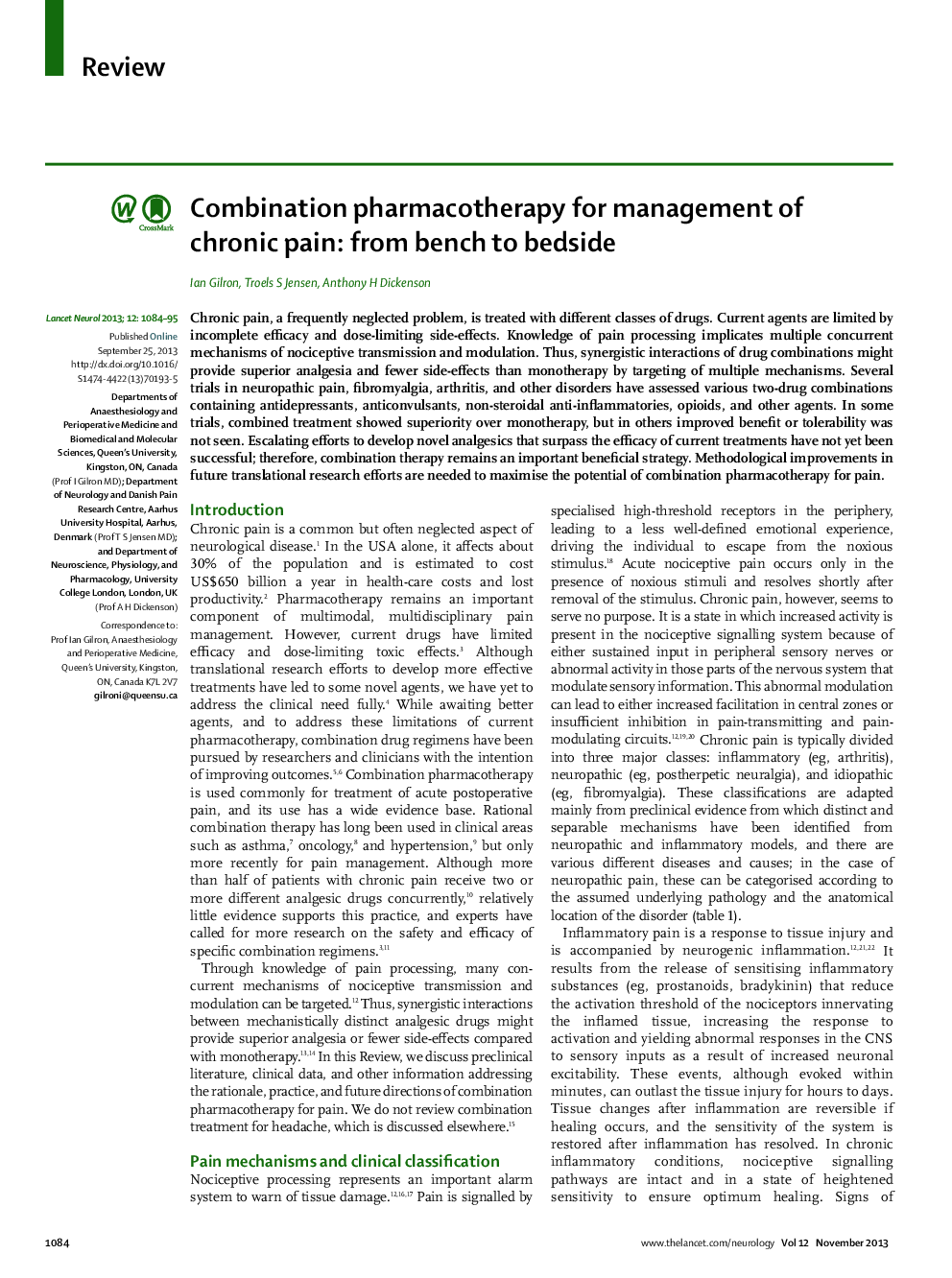| Article ID | Journal | Published Year | Pages | File Type |
|---|---|---|---|---|
| 3066793 | The Lancet Neurology | 2013 | 12 Pages |
SummaryChronic pain, a frequently neglected problem, is treated with different classes of drugs. Current agents are limited by incomplete efficacy and dose-limiting side-effects. Knowledge of pain processing implicates multiple concurrent mechanisms of nociceptive transmission and modulation. Thus, synergistic interactions of drug combinations might provide superior analgesia and fewer side-effects than monotherapy by targeting of multiple mechanisms. Several trials in neuropathic pain, fibromyalgia, arthritis, and other disorders have assessed various two-drug combinations containing antidepressants, anticonvulsants, non-steroidal anti-inflammatories, opioids, and other agents. In some trials, combined treatment showed superiority over monotherapy, but in others improved benefit or tolerability was not seen. Escalating efforts to develop novel analgesics that surpass the efficacy of current treatments have not yet been successful; therefore, combination therapy remains an important beneficial strategy. Methodological improvements in future translational research efforts are needed to maximise the potential of combination pharmacotherapy for pain.
